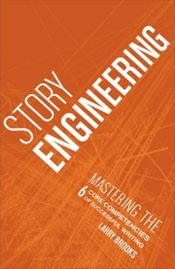Hey diddle diddle
the cat and the fiddle
the cow jumped over the moon
the little dog laughed to see such a sport and
the dish ran away with the spoon
Okay, it’s all fun and games when the dish runs away with the spoon, but not so much when it’s your character who’s running off with your story. Or at least what you thought was your story.
As a discovery writer, I tend to have my stories overtaken by events. I’ve had a character yell at me that while he could be a cold blooded killer, there was no way he was going to kill that girl for that reason. When he refused, it changed everything. I have to say he was right when I looked at it, but still, what do you do?
Moments like that when my characters talk to me, heck, when they rebel are part of the reason I’m a discovery writer. For the most part, I let them take me for the ride and then see what I ended up with in editing. But sometimes the tangent the characters want to travel down isn’t one they should. Or, as often happens to me, my short story becomes a novella, becomes a novel, becomes a trilogy. Sigh. I’m in the middle of that now with New Bohemia: Just One Night. When I started that story, it was a short that kept interrupting my ability to work on a novel. So, I figured what the heck, I’ll write the short and get it out of my system. That was months ago. At 60,000 words, the story isn’t so short anymore because I decided I needed to kill off my main character’s parents in a way she’s going to feel responsible for the deaths. The story didn’t derail so much as I added a twist to make my characters’ break-up make sense.
As I see it, the trick is knowing when the diversion adds to or deepens the story and when it doesn’t. If in Chapter 12, Rafe is suppose to have a have a fight with the love of his life and the relationship is supposed to look like it’s over, but, instead, if Rafe decides to go hunting with the guys and finds a magic sword that happens to be Excalibur, you might have a problem or, at least, be writing a different story than you thought you were.
If you’re an outliner, you probably know almost immediately when your characters stray and can assess whether in the overall plot arc if the diversion is a complication that should stay or navel gazing that needs to be cut. It’s a bit harder for us discovery writers. After all, we often don’t know where the story is going. (Yes, I acknowledge that this is the way to madness for some.) It could be that the first 100 pages is wrong and not the “diversion”. Been there, done that and it stinks.
So, you have a couple of choices when the characters try to run the show.
1. Go with it. Since the characters are only the writer’s unconscious mind, they might be on to something.
2. Assess the detour and see if it’s a path the story should travel. If not, stop or see #5 below.
3. If it’s a main character mutiny, write it and worry about whether it works in rewrite. This is often what I do.
4. If it’s a minor character, cut, paste and save the “new” story for a sequel or related story.
5. Cut, paste and save in another document, and keep on your plan or outline.
Sometimes when your characters decide to turn left instead of right, you discover wonders. Sometimes it results in the never ending story. The latter isn’t good. You must finish the story. Any story. Every story.
Remember, you need to choose what’s important for your story. If the track your character wanders onto doesn’t advance the story you want to tell, stop, hold a character intervention and get back to the plot line you want. If the path through the forest isn’t well defined, don’t be afraid to leave it and smell the flowers along the way. Just watch out for the big bad wolf, and Hades.



